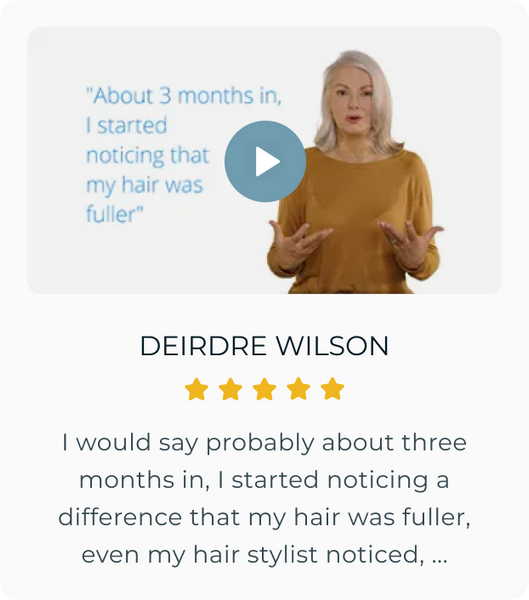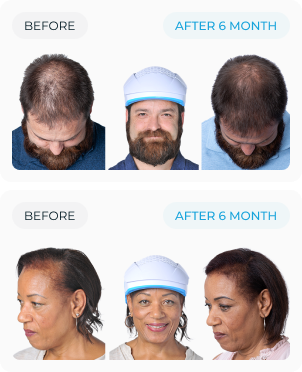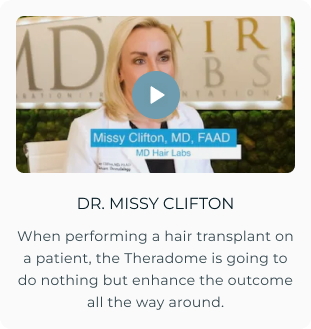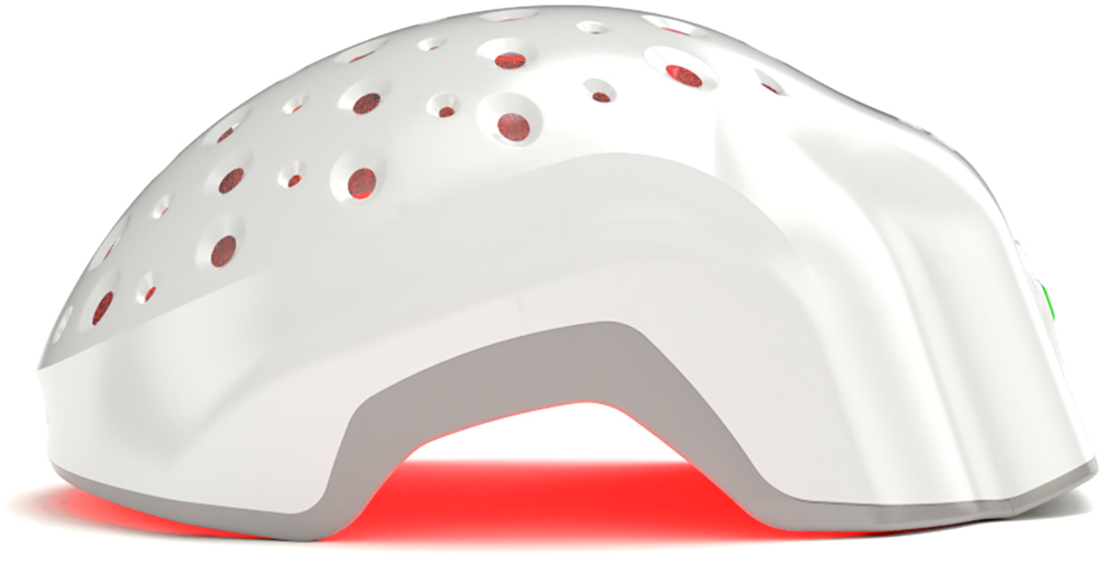You might have wondered why your hair seems to stop growing once it reaches a certain length. This is a common question, and the answer lies in how hair grows. Although many people believe hair can grow indefinitely, each strand actually has a growth limit mostly determined by genetics.
The main factor in hair growth is the anagen phase, also known as the growth phase. Each hair follicle has a limited time in this phase, and once it ends, the hair strand stops getting longer.
While you can't change your genetic blueprint, you can still influence your hair's health and help it reach its maximum potential. By improving your hair care routine, reducing hair breakage, and minimizing stress, you can create the best possible conditions for growth.
Understanding this process can explain why some people have long, flowing locks while others struggle to grow their hair beyond a certain length. In this blog, we’ll explore the science behind hair growth cycles and uncover the factors that ultimately determine how long your hair can grow.
Understanding the Hair Growth Cycle
The hair growth cycle determines how long your hair grows, when it rests, and eventually, when it sheds. This cycle sets the upper limit on your hair length. It has four phases:

- Anagen Phase: This is the active growth phase of your hair, lasting anywhere from 2 to 7 years. The longer this phase, the longer your hair can grow. Your genetics can vastly determine how long hair follicles stay in anagen mode, which in turn affects how long your hair can grow. Once this phase ends, the hair stops growing.
- Catagen Phase: It is the phase when growth slows, and the follicle starts to shrink. It lasts about 2-3 weeks.
- Telogen Phase: This is the resting phase in which hair follicles take a break from growth. It lasts around 3 months, during which the old strand stays in place while a new one prepares to grow.
- Exogen Phase: In this phase, the old strand sheds to make room for fresh growth. This shedding phase lasts for 3-5 months, during which about 50-100 hair strands fall out in a day, which is a normal process.
However, all the individual hair follicles are not in the same phase at once. It is reported that 90% of hairs are in the anagen phase at any given time.
The Role of Genetics and Lifestyle in Hair Growth
Your DNA dictates the duration of each phase. A longer anagen phase means more potential for enviably long hair, while a shorter one means your hair hits its maximum length faster. But genes aren’t the only players in this follicular drama—stress, diet, and scalp health can also influence the effectiveness of each phase.
Understanding these phases gives you the power to work with your hair cycle, not against it. Whether it’s about maintaining healthy follicles or optimizing your lifestyle, respecting the hair growth cycle stages is key to maximizing your length potential.
Why Does Your Hair Stops to Grow After a Certain Length?
If your hair feels like it has hit a growth plateau and won't grow past your shoulders, it’s not rebelling—it’s just following the science. There’s more to the question of why your hair seems to stop growing than meets the eye.
So what are the factors affecting hair growth rate, and why might your locks not make it past a certain length?
1. Genetics
Your DNA holds the ultimate trump card when it comes to hair length. The anagen phase, or the active growth phase of your hair cycle, is genetically programmed and determines how long your hair can grow. For most people, this phase lasts anywhere from two to seven years. But if you’ve ever wondered why some people can grow hair down to their knees while others struggle with shoulder-length strands, genetics is the answer.
Simply put, your genetics and hair length are directly tied. Once the anagen phase ends, hair transitions into resting and shedding phases, no matter how many growth serums you apply. While you can’t change your genetic blueprint, optimizing other factors can help you make the most of your natural potential.
2. Age
Aging may bring wisdom, but it also brings changes to your hair growth cycle. As you age, the anagen phase tends to shorten, leading to less time for your hair to grow. This is why many older adults notice thinning hair or slower growth rates.
Also Read: Does your hair really slow down in growth with age?
Additionally, hormonal changes—especially during menopause—can further disrupt the cycle, reducing the average hair growth per month. While age is inevitable, supporting your hair with nutrient-rich products and maintaining scalp health can mitigate some of these effects.
3. Health and Nutrition
Your hair is a reflection of your overall health, so it’s no surprise that a poor diet can lead to stunted hair growth. Hair follicles need a steady supply of vitamins and minerals to thrive. Nutritional deficiencies—particularly in biotin, zinc, iron, and vitamin D—can halt growth and cause thinning.
Protein, the building block of keratin (the protein that makes up your hair), is especially crucial. Without it, your strands may weaken, making breakage inevitable. Prioritize a balanced diet or consider supplements if you suspect your intake is lacking. Remember: what you feed your body feeds your hair.
4. Stress and Hormones
Stress doesn’t just mess with your mind—it can also wreak havoc on your hair. Chronic stress triggers hormonal imbalances, leading to a condition called telogen effluvium, where hair follicles are pushed into the resting phase prematurely. This disrupts the normal growth cycle and causes excessive shedding.
Hormonal shifts, like those experienced during pregnancy, postpartum, or thyroid issues, can also impact growth. Managing stress through mindfulness techniques or professional support can help maintain hormonal balance and keep your hair on track.
5. Hair Care Practices
Your daily habits may be sabotaging your growth goals. Over-styling, frequent use of heat tools, and harsh chemical treatments (looking at you, bleach) weaken your hair structure, making breakage far more likely. The result? Your hair breaks before it reaches its maximum potential length. It can also lead to uneven hair growth.
Switch to gentler practices, such as air-drying your hair, using heat protectants, and spacing out chemical treatments. Protective styles like loose braids or buns can also minimize damage and promote healthier growth.
6. Scalp Health
Your scalp is the foundation of healthy hair, and a common reason for hair not growing long is poor scalp health. Hair strands need a clean and clear scalp for healthy growth.
But over time, a mix of natural oils/sebum, dead skin cells, and styling products can create a layer of buildup that clogs the hair follicles, restricting growth and stopping hair from reaching its full potential.
This can lead to hair thinning or cause new strands to be weaker and more prone to breakage. This issue is often overlooked, but it's a major reason why your hair might seem stuck at a certain length.
Chronic buildup can also lead to scalp inflammation and conditions like dandruff, which create a hostile environment that further hinders the natural hair growth cycle.
7. Split Ends
Split ends might seem like a small problem, but split ends can have a significant impact on your hair length. If left untreated, split ends travel up the hair shaft, causing the strand to weaken and snap. This creates the illusion that your hair isn’t growing, even though it technically is.
Regular haircuts help reduce split ends and further grow your hair. Trimming your hair every 6-8 weeks removes damaged ends, preventing further breakage and keeping your strands healthy. It’s not about cutting off growth—it’s about preserving what you already have.
8. Harsh Products
If your bathroom shelf is loaded with products that contain sulfates, alcohol, or other harsh chemicals, it’s time for a hair care audit. These harsh ingredients in shampoo and other hair products strip your hair of its natural oils, leaving it dry, brittle, and prone to breakage. Over time, this can significantly limit visible growth.
Opt for sulfate-free shampoos, nourishing conditioners, and leave-in treatments that focus on hydration and repair. Natural oils like argan oil and coconut oil can also provide extra moisture and protection without weighing your hair down.
How to Maximize Your Hair Length?
On average, your hair grows about 6 inches in a year. You might not be able to convince your genes to extend your hair’s growth cycle, but you can create the perfect conditions for your strands to thrive. Knowing how to extend the anagen phase and minimize breakage can make all the difference.
1. Healthy Diet
Healthy hair starts from within—literally. Your follicles rely on essential nutrients to stay in their growth phase for as long as possible.
- Protein: Hair is mostly made of a protein called keratin, so diet lacking in protein can send hair strands straight into the resting phase, which often leads to increased hair shedding and slower regrowth. Maintain a balanced diet rich in high-quality protein sources such as eggs, fish, nuts, and lean meats for healthy hair growth and overall hair strength.
- Vitamins and Minerals: Biotin, zinc, and iron play critical roles in hair health, but only if you're deficient in them. Overloading on these nutrients won’t magically transform your hair; it’s all about balance. Add leafy greens, berries, and fortified cereals to your plate to fill the gaps.
2. Gentle Hair Care
Rough handling can derail even the healthiest hair, making it snap before it reaches its full potential. A little TLC goes a long way.
- Reduce Heat Styling: Hot tools like curling irons and straighteners might give you a quick style fix, but they’re also frying your hair. Opt for air-drying or heat-free styling methods.
- Protective Styles: Low-tension hairstyles like loose braids or buns reduce stress on your hairline and ends, helping you retain length.
- Avoid Harsh Products: Sulfates and alcohol in shampoos can strip your hair of natural oils, leaving it brittle. Switch to sulfate-free shampoos for gentler cleansing.
- Regular Trims: Yes, trimming your hair helps it grow longer—by preventing damage from traveling up the shaft.
- Remove Split-Ends: Left unchecked, split ends will creep higher, leading to more breakage and loss of length. Trimming every 6–8 weeks removes these weak points and keeps strands healthier.
3. Scalp Massage
Your scalp is the foundation for hair growth, and giving it a little attention can go a long way.
- Boosting Blood Flow: Regular scalp massages stimulate blood circulation, delivering oxygen and nutrients to your follicles. This can enhance their ability to stay in the growth phase.
- Add Oils for Extra Nourishment: Incorporate natural oils like castor oil or rosemary oil during your massage to nourish the scalp and keep it hydrated.
What Are the Treatment Options to Support Healthy Hair Growth?
If you’re wondering how to make hair grow longer naturally, the answer is a mix of biology, care, and a sprinkle of science-backed interventions. While genetics set the upper limit for your hair’s length, certain treatments can maximize its potential by extending the anagen (growth) phase or strengthening your follicles.
Laser Therapy Devices
When it comes to cutting-edge treatments for hair growth, laser therapy devices like Theradome hair growth helmet are leading the charge. These FDA-cleared devices, like laser helmets and combs, use low-level laser light to stimulate the scalp. Here’s how they work:

- Scalp Stimulation: Low-level lasers penetrate the scalp to increase blood circulation, delivering more oxygen and nutrients to your hair follicles. This helps revive sluggish follicles and keeps them active longer during the anagen phase.
- Follicle Reactivation: Dormant or "resting" follicles can be nudged back into the growth phase. Over time, this can lead to thicker, healthier hair.
Research supports the efficacy of laser phototherapy devices, showing measurable improvements in hair density and thickness with consistent use.
While laser therapy isn’t a “magic wand” for hair growth, it’s a powerful, clinically proven tool to boost scalp health and promote longer, stronger strands when combined with proper hair care practices.
Conclusion
Hair doesn’t stop growing at a certain length—it just follows the biological blueprint dictated by your genetics, lifestyle, and habits. While you can’t rewrite the rules of DNA, you can fine-tune your routine to give your hair the best chance to thrive. Focus on healthy practices, embrace consistency, and your strands will thank you in length and strength.

























